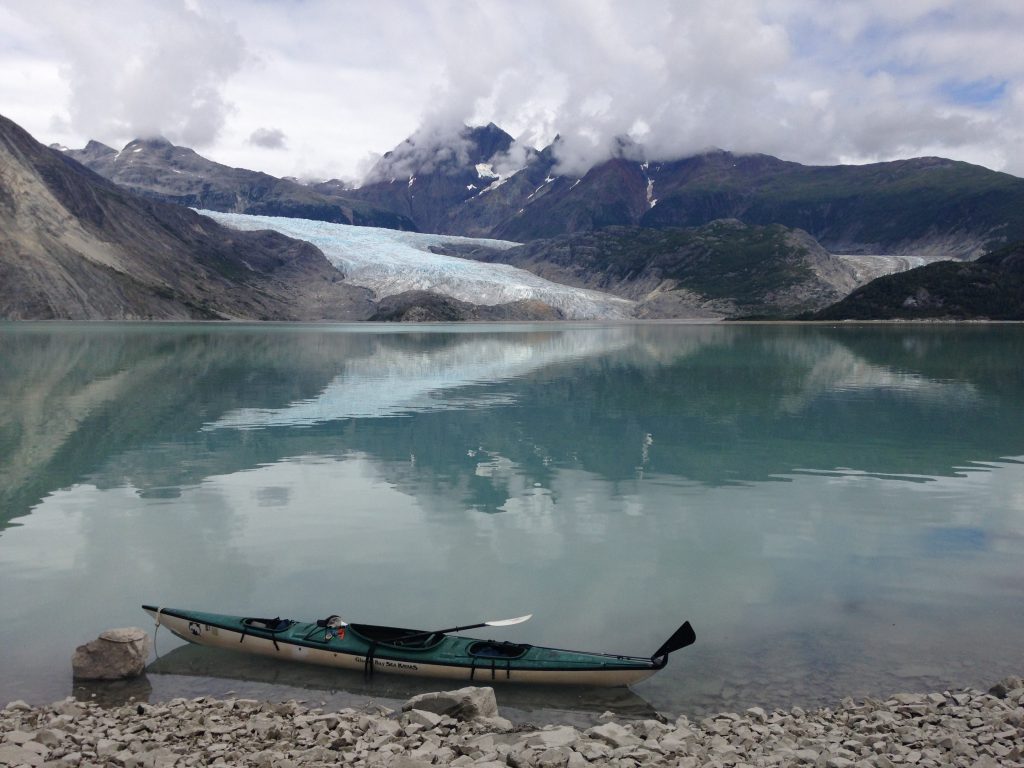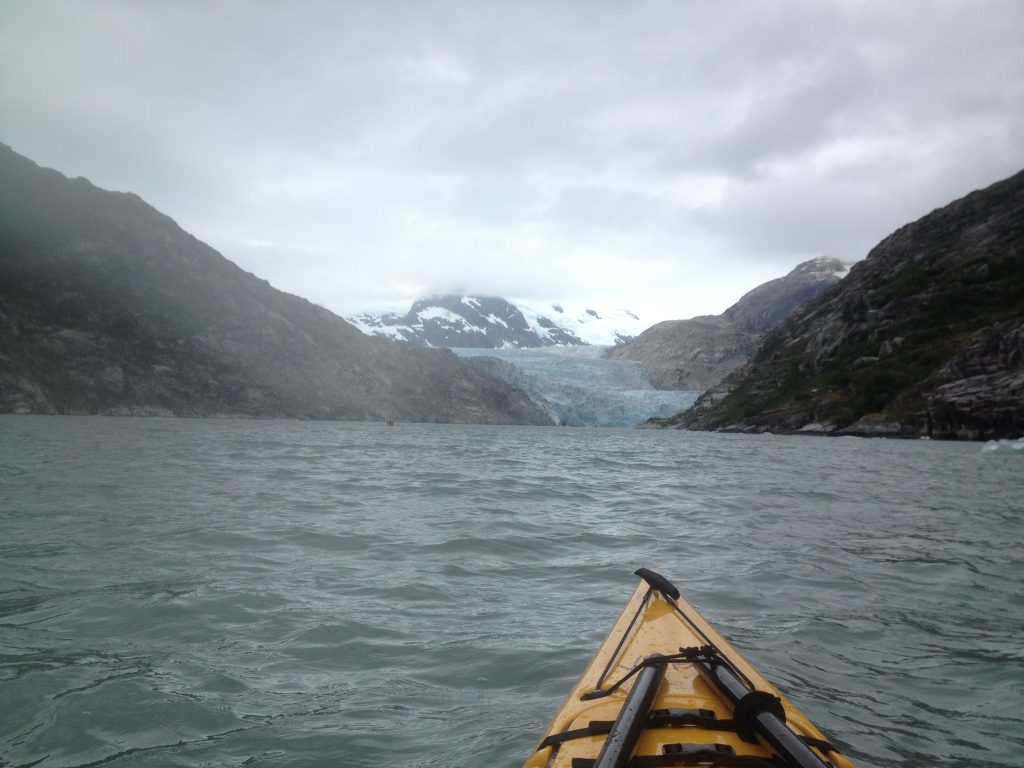Kayaks create opportunities along bays, lakes, and rivers that allow us to experience the outdoors in a completely unique way. Gliding quietly through placid waters by rhythmically paddling can be meditative and brings us closer to wildlife that would typically feel threatened by hiking’s comparatively loud noises.
Of course, kayaking presents its own set of challenges and considerations. Although a significant amount of backpacking gear translates well to kayak touring, a number of kayak-specific pieces and concepts are necessary when you’re preparing for an extended amount of time on the water.
A word about touring kayaks: Storage requirements are a primary consideration when selecting the right vessel for a multi-day trip. A 12-foot, closed cockpit kayak offers enough storage for a weekend trip. With packable gear and food, a 16-foot kayak can handle enough supplies for a week-long trip.
Keep in mind that these are guidelines, and that paddler and gear weight, camping style, food selection, and paddling conditions all play a role in trip duration. Closed cockpit boats with hatches protect your gear from water and prevent gear loss if your kayak capsizes. Touring kayaks often come with a skeg to assist with tracking or a rudder to assist with both tracking and changing direction. While you can tour with a boat that has neither, a paddler with a skeg or rudder uses less energy in maintaining direction, especially in windy conditions.

Safety
First and foremost, any amount of time paddling requires safety gear. Personal flotation devices are required by law in many places and are a universal best practice. Additionally, here some necessary items to properly outfit a paddle trip:
- Bilge pump: Durable and easy to use, bilge pumps can quickly clear the cockpit of water you may take on.
- Whistle: Kayaks sit low in the water and are difficult for boaters to see, so a whistle can help make your presence known.
- Sponge: While bilge pumps remove most water, sponges can clear out low-lying water that a bilge can’t suction up.
- Paddle float: Even paddlers with effective self-rescue techniques can benefit from the assistance of a paddle float when water conditions are rough.
- Spare paddle: Any weather or area conditions that can break a primary paddle will likely require a high-quality spare.
- Throw bag
- First aid kit

Keeping Dry
With safety items out of the way, which pieces of gear let you make the most of your paddling time? If you are a backpacker or hiker, your standard compact gear is additionally useful for kayak touring. A compact tent, sleeping bag, sleeping pad, stove, and cookware are all necessary for multi-day touring. Take a look at this article for some ideas on minimizing space and weight on your trip.
Storage
As far as paddle-specific gear is concerned, clothing and storage are two vital areas. Storage is simple: dry bags. Kayak hatches are never guaranteed to be waterproof, so dry bags effectively keep items dry that need to stay that way. These bags come in a variety of sizes and colors, with some companies offering clear options that allow you to see the contents without opening the bag.
I typically use separate bags for my tent, sleeping bag, clothing, and gear, while food is kept in sealed containers within a bear canister. Rather than storing everything in fewer but larger bags, using four smaller bags allows me to pack more precisely and access items more quickly. I use three 10L bags and one 20L bag. Keep in mind that bags larger than 20L may be difficult to squeeze through a hatch.
Clothing
It is important to consider weather and water conditions when selecting paddle clothing. Warm conditions permit lightweight, UPF-rated layers, such as these. Cold weather and water conditions require layers that will keep you warm when paddling and in case of capsizing.
Two options exist: wetsuits and drysuits. Wetsuits trap a thin layer of water between your body and its material, usually neoprene, which is then heated by your body and creates an overall insulation system. Companies also offer separate, thin neoprene tops and bottoms, such as the NRS HydroSkin series, that are practical when a full wetsuit is undesirable.
In general, wetsuits work well for most paddlers in temperate summer and shoulder-season climates. However, during the worst cold-weather conditions, drysuits shine. An effective drysuit prevents water from entering at the wrists or neck, allowing its wearer to sport clothing layers underneath without fear of soaking.

Tips and Techniques
1. Treat Your Kayak
Treating your kayak with aerospace protectant spray will prevent sun damage throughout the paddle season. Additionally, this product lubricates rubber hatches, making access easier while you’re paddling.
2. Pick the Right Paddle
Paddles come in various lengths and styles. Your body type and paddling style dictate your optimal paddle length. Touring kayakers generally maintain a low paddling angle, which is less powerful and conserves more energy than a high angle. I use an Aqua-Bound Eagle Ray for my primary paddle, which is an efficient touring choice for my low-angle style, and a four-piece Sting Ray, a paddle with solid all-around performance for either high- or low-angle styles, for my spare. Since it is a four-piece, I can either strap it to my deck in a conventional fashion or slide it on top of my gear in the front hatch.
3. Balance Your Load
Do your best to maintain a low center of gravity and balanced weight dispersal when packing your kayak. A high center of gravity will decrease the boat’s overall stability, and unbalanced weight will impact the kayak’s tracking. Safety gear should be kept in an immediately accessible place (for example, on the deck). As well, I usually keep a bottle of water and an energy bar or another snack in my cockpit behind the seat for convenient access.
4. Consider a Spray Skirt
Spray skirts can be intimidating for many newcomers. But, you’ll soon find that they are practical, increase comfort, and create options in the event of a capsize. Skirts prevent water from entering the cockpit, keeping your legs drier and warmer. Many come with pockets for maps or snacks as well.
Importantly, if you are familiar with how to roll a kayak, skirts prevent flooding and allow you to roll when capsized. If you are new to skirts, please take the time to practice exits—dry first, and then wet exits—so you are well prepared to evacuate the boat in case of an emergency.
5. Don’t Forget Gloves
I consider gloves a necessary component for my overall paddling enjoyment. They prevent blisters and keep my hands warm during cold-weather paddles.
6. Wear Durable Footwear
While launching from a pleasant sandy beach doesn’t require much planning with regards to footwear, putting in or pulling up on a rocky coast does. Without proper footwear, you’ll find that carrying boats across rocky terrain can be painful and dangerous. Keen, Chaco, and Teva all offer durable sandals that alleviate this issue. Paddle socks made of neoprene are also practical and comfortable when you’re handling cool conditions.

This information should get you started on planning your next multi-day paddle. As always, please follow Leave No Trace principles when out in the backcountry, and be sure to post some of your ideas, advice, and kayaking experiences.
Joseph Lasky
Originally hailing from New Jersey, Joe’s adoration for the outdoors was born during time spent in the badlands of North Dakota. The cold, windy, and desolate clay landscape set backcountry passions ablaze. Once ignited, wanderlust brought him to wild areas throughout the states before settling down in Alaska for several years. After backpacking and kayaking in the rugged north country, Joe bid farewell to his neighborhood bears and moose, drove back East, and calls the Philadelphia area home. He now dabbles in bicycle commuting, though kayak touring, backpacking, and trail running are his perennial favorites.




